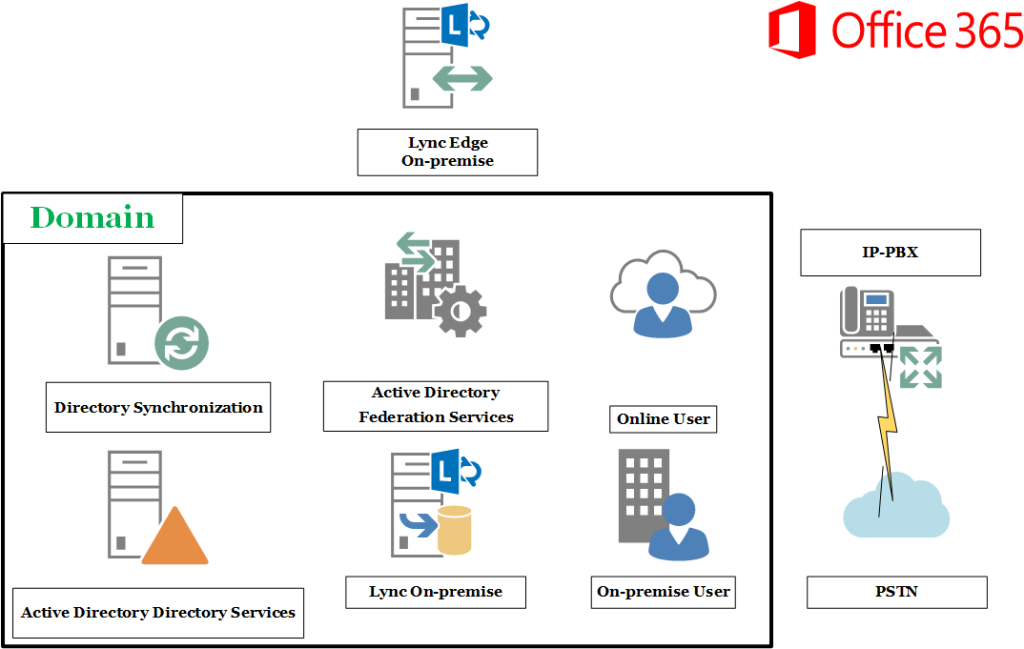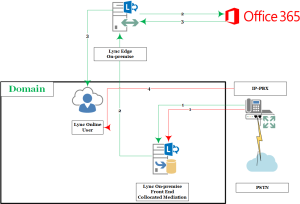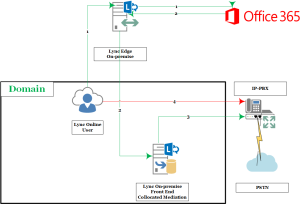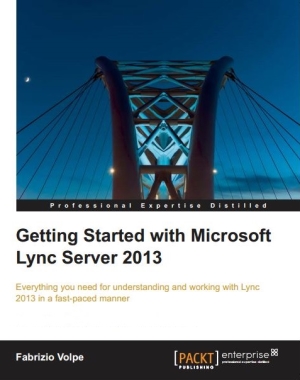Disclaimer: please remember that the Lync hybrid configuration option referred to as “hybrid voice” is now deprecated
Lync Server 2013 adds features and tools to the previous release that enhance the flexibility and reliability of this unified communication solution.
In the hybrid voice scenario our domain users are enabled to register with Lync Online while all the telephony services are granted by the Enterprise Voice of Lync on-premises. Such a design is made possible by the new Cloud offers from Microsoft (Office 365).
The cornerstone of the solution is that signaling and media data streams have been optimized (as we will see later) so that we have:
- Minimum bandwidth required
- Reduced costs when calling external numbers
- Best quality both when we are connecting with users in our company or with people outside our voice infrastructure
Signaling sets up the call (passing information like called and caller numbers to the devices) while media is responsible to actually move the voice traffic.
Lync 2010 had rigid limitations for the hybrid solution (for example we had to split our users on two different domains, one for the on-premises users and one for the online users).
In Lync 2013 this kind of requirement has been removed.
An hybrid voice design will look like the one in the next figure (we will explain the different servers and roles required in a dedicated paragraph).
An infrastructure like this will accelerate the adoption of Lync in the company with a large part of the workload delegated to the external Lync service.
As we said before, what we still have to provide with hybrid voice is the Enterprise Voice (including VOIP and integration with the Public Switched Telephone Network).
Hybrid voice requires Lync 2013 on-premises inside our network.
This configuration allows you to preserve your existing investments in hardware (like voice gateways) and to keep your present tariff agreements with telephony service providers (a critical aspect for those with geographically distributed sites)
There are many parts in the design of an hybrid voice solution for Lync to be considered in order to fully understand the impact of this solution and use it to the fullest.
Requirements
Lync 2013 on-premises will be installed on servers joined to our domain (with the exclusion of the Lync Edge). We will use Active Directory Synchronization to maintain users correspondence between the on-premises and online environment. The Federation services will be used to authenticate domain users on Lync Online.
As a side note, we have the capability to integrate the Lync experience with other applications such as Office 365 Exchange Online and SharePoint Online.
The on-premises components required (in addition to the Lync Online services delivered from an online tenant) are the ones shown in the above image:
- An Active Directory Federation Services (AD FS) 2.0 server
- An on-premises deployment of Lync 2013
- A Directory Synchronization server
“Planning for Lync Server 2013 Hybrid Deployments”
Various kinds of distribution are supported for the Lync on-premises (see “topology requirements” in the aforementioned TechNet article).
We will considered a scenario with an Edge and a “next hop” based on Lync 2013.
Hybrid Voice – Registration
As shown in the next image, the initial phase of access to Lync (recording) for an online user consists of four steps:
- The DNS queried from the client for the registration directs the user to the local Lync Front End
- The user connects to the on-premises Front End
- The server identifies the user as enabled to the hybrid voice
- The user registration request (passing through the Lync Edge) is headed to Office 365
Note that all traffic of this phase is the type signaling.
Hybrid Voice – Incoming Calls
In case of an incoming call from the PSTN, there is a clear distinction between the signaling and the media data streams (whit the second more expensive for bandwidth consumption).
The diagrams will represent the signaling traffic in green, and the media traffic in red.
- Because the call comes from the PSTN, the IP-PBX will verify that the number is associated with Lync and route the signaling traffic to the Lync Front End (and the Mediation server, if the two roles are separate)
- The mediation server determines which is the next hop and then routes the signaling stream to Lync Online
- Lync Online registers the user’s endpoint
- If we have media bypass enabled, the call (audio media stream) goes directly to the user, in the alternative is passed by the Mediation Server Lync
Hybrid Voice – Outgoing Call
In the case of an outgoing call to the PSTN, there is (again) a clear distinction between the signaling and the media data streams
The diagrams will represent the signaling traffic in green, and the media traffic in red.
- The user registers on Lync Online
- Signaling stream is routed to the Lync on-premises
- Lync will apply the Enterprise Voice policies to evaluate if and how to forward the call.
- The user, with media bypass enabled, directs the media stream for the call to the IP-PBX (else he has to pass through the Mediation server)
Conclusions
The described mechanisms applies also to the voice calls between the different kind of Lync users in our company (online and on-premises), with the target to get the best quality and the lowest cost.
As said earlier, hybrid voice is an instrument that can solve various problems and scenarios, and proper design can make it an important solution.






Great info. One note: “on-premise” should be “on-premises”. Noticed that in several places.
Good hint, thank you.
I have changed to on-premises.
I have to say I have seen many documents using also the on-premise form 🙂
I thought that Hydrib voice was being deprecated ?
As far as I know, hybrid voice is not deprecated.
There are some “dedicated” plans for Lync Online that include telephony but they are not available to all the users everywhere http://technet.microsoft.com/en-us/library/dn194465.aspx
So, if you buy Office 365 and you need Enterprise Voice, that is the only way.
I was talking only for the Hydrid voice scenario:
This is what I receive from MCS and our TAM:
•The Lync hybrid configuration option referred to as “hybrid voice” is being deprecated and should not be sold or provisioned. This is effective immediately.
•The other Lync hybrid offers continue to be supported. These include using Lync Server in combination with Exchange Online, and splitting users between Lync Server and Lync Online (“split domain”).
•There is no change to field guidance for selling Lync enterprise voice: If there is a voice deal on the table, sell Lync Server. Introduce a hosting partner if needed.
Here the official article:
http://blogs.technet.com/b/nexthop/archive/2013/05/13/lync-hybrid-offers-simplified.aspx
Thank you very much for pointing out the new article on NextHop.
Just after your previous comment, here it is an official statement from Microsoft.
Do you believe in coincidences ? 😉
someone is stealing your work claiming to own http://overnetconsulting.it/ViewContent.aspx?p=045d09e4-b0e9-424c-8cc5-0cc7d68c5a54
OverNet is authorized to use the italian version 🙂
Also, if you look at the lowest part of the post, there is my name & surname.
Anyway, thank you for telling me 😉
Dear,
Does this kind of setup still work? Can Office 365 users be enabled for Enterprise Voice using this technique?
You mention that hybrid voice is deprecated, but you explain how to set it up. Does deprecated mean “unsupported, but still working”, or just, “no longer working”?
Many thanks for your reply.
Kind regards,
Koenraad Willems.
Hi Koenraad.
The only available solution to be considered valid for an hybrid deployment of Lync Online is Hybrid Deployment with split domain.
I have tried to explain the aforementioned solution in this post:
Lync Online Hybrid Deployment with Split Domain Demystified
The Hybrid Voice post remains there because many people continue to seek information about this topic, and I think it’s fair to point out how the solution worked, along with the fact that this kind of deployment is NO LONGER in the list of possibilities.
So basically, what you explained is just there for information/archival purposes, but it is no longer an option to use?